
What's hot
What's hot
|
|
| October 2007
Polyphenols' benefits vary with dose
Acting on in vitro findings, Daniel Henrion and his associates at INSERM in Angers, France treated rats with a low or high daily dose of red wine polyphenolic compounds, then blocked blood flow in the animals' left femoral artery. After two weeks, rats that received the low dose of polyphenols, equivalent to those found in 1/10 glass of red wine, had increased blood flow and microcapillary density, indicating an angiogenic effect. Animals that received the high dose, equivalent to 7 glasses of red wine, experienced reduced arterial, arteriolar, and capillary densities and blood flow. For an antiangiogenesis effect, it would be necessary to drink a bottle of wine per day, an amount considered unhealthy. A better option would be polyphenols extracted from plants converted into a tablet. "When it comes to finding treatments for complex diseases, the answers are sometimes right there waiting to be discovered in unexpected places like the produce aisles and wine racks of the nearest store,” FASEB Journal Editor-in-Chief Gerald Weissmann, MD stated. “But it takes modern science to isolate the pure compound, test it in the lab, and to go on from there to find new agents to fight disease.” “The use of plant polyphenols as therapeutic tools presents important advantages,” Dr Henrion noted, “because they have a good safety profile, a low cost and they can be obtained everywhere on the planet.” —D Dye Short telomeres linked to colon cancer
Gastrointestinal malignancy specialist Lisa Boardman, MD of the Mayo Clinic and an interdisciplinary group of researchers compared the DNA in blood samples from 114 colon cancer patients aged 50 and younger with that of 98 individuals with no cancer history. They discovered that the DNA of the cancer patients featured unusually short telomeres which are more often seen in older individuals. Telomeres are caps at the ends of chromosomes that contribute to their stability. Shortened telomeres occur with aging and age-related diseases, including cancer, and have been found in colon cancer cells. Colorectal cancer is most often diagnosed among people in their mid-sixties, although it may develop earlier. The team also observed that the disease appeared more frequently in men than in women in the age group evaluated in the current study. “Finding this association between colon cancer patients and increased telomere shortening is exciting because, if validated, it really opens up new possibilities for new treatment strategies," Dr Boardman stated. "For example, we know that telomere length can be repaired, so we want to look at telomere maintenance genes which, when defective, might very well contribute to cancer." “We know that cancer is a disease of the environment and genes, both of which affect telomeres," she added. "If we can understand how this happens, it could lead us to develop therapies to reverse premature telomere shortening, stall it or protect the telomeres from destructive influences in the first place.” —D Dye DHEA improves women's in-vitro fertilization chances
Norbert Gleicher, MD, of New York's Center for Human Reproduction observed an increased in the pregnancy rate in his clinic from 11 to 23 percent among patients over 40 years of age who have supplemented with DHEA. Dr Gleicher began suggesting three 25 milligram doses of DHEA per day after observing the spectacular results achieved by one of his patients who supplemented with the hormone. Acting on the results of a small trial published in the October, 2000 issue of the journal Human Reproduction, the patient tried supplementing with DHEA in an effort to boost the number of eggs produced by her ovaries. The 42 year old woman increased the amount of extractable eggs from one per IVF cycle to 19 over the course of seven cycles. "We were kind of stunned,” said Dr Gleicher. The researchers hope that DHEA will improve the chances of older women to use their own eggs for IVF rather than relying upon donor eggs. In a pilot study of 27 women, reported at a meeting of the American Society for Reproductive Medicine held in Washington DC this month by Dr Gleicher's colleague David Barad, eight women who received DHEA produced more eggs and had twice the number of high-quality embryos suitable for transfer into the uterus per cycle than women who did not receive the hormone. Massachusetts General Hospital reproductive endocrinologist Janet Hall, believes that DHEA's use warrants further investigation. “It’s very tantalizing data,” she observed. —D Dye Study finds improved lifestyle could prevent most heart attacks in women
Agneta Akesson, PhD, MPH, of the Karolinska Institutet in Stockholm and colleagues analyzed questionnaires completed by 24,444 postmenopausal women on their intake of 96 foods. The researchers identified four major eating patterns: healthy, which includes significant amounts of fruits, vegetables and legumes; Western/Swedish, which contains large amounts of meat, poultry, pasta, eggs, fish, rice and fried potatoes; alcohol, which included liquor, wine, beer and snacks, and sweets, in which desserts were highly represented. Participants were followed for an average of 6.2 years. Over the follow-up period, 308 heart attacks occurred, including 51 that were fatal. The researchers found that the healthy and alcohol dietary patterns were associated with a reduction in heart attack risk. “The low-risk diet (high scores for the healthy dietary pattern) characterized by a high intake of vegetables, fruit, whole grains, fish and legumes, in combination with moderate alcohol consumption (5 grams of alcohol per day or less), along with the three low-risk lifestyle behaviors (not smoking, having a waist-hip ratio of less than the 75th percentile and being physically active), was associated with 92 percent decreased risk compared with findings in women without any low-risk diet and lifestyle factors,” the authors write. “This combination of healthy behaviors, present in 5 percent, may prevent 77 percent of myocardial infarctions in the study population.” “These dietary behaviors together with a healthy lifestyle and body weight may prevent most myocardial infarction events,” the authors conclude. —D Dye Quercetin lowers blood pressure in clinical trial
Thunder Jalili and colleagues at the University of Utah in Salt Lake City enrolled 19 men and women with prehypertension, and 22 with stage I hypertension in the current randomized, double-blind, placebo-controlled, crossover trial. Blood pressure ranged from 120 to 139 mm Hg systolic and 80 to 89 mm Hg diastolic in the prehypertensive group and from 140-159 mm Hg systolic and 90 to 99 mm Hg diastolic in the stage I hypertensive patients. Participants were given 703 milligrams quercetin daily or a placebo for 28 days, followed by a two week period in which no supplements were given. In the second 28-day phase of the trial, the groups' treatment regimens were switched. Blood pressure was measured, and blood samples were drawn and analyzed for quercetin levels and other factors at the beginning and end of each phase of the trial. Plasma quercetin levels doubled compared to placebo after four weeks in the participants that received quercetin. Although quercetin did not improve blood pressure in subjects with prehypertension, systolic pressure was reduced by an average of 7 points, diastolic by 5 points, and mean arterial pressure by 5 points in stage I hypertensive patients. "Our study is, to our knowledge, the first to show that quercetin reduces blood pressure in stage I hypertensive individuals," the authors write. "Our data indicate that potential exists for this polyphenolic compound to be used as adjunct therapy in diet/lifestyle interventions to help control blood pressure in hypertensive individuals," they conclude. —D Dye Study links dietary vitamin D with breast cancer protection
Sascha Abbas, Jakob Linseisen, and Jenny Chang-Claude at the German Cancer Research Center in Heidelberg sought to determine the combined and separate effects of calcium and vitamin D on breast cancer. They examined dietary questionnaire responses from 178 premenopausal breast cancer patients and 666 age-matched control subjects residing in Germany, whose average age was 41 years. The team found that nearly 90 percent of the participants consumed less than the recommended intake of 5 micrograms (200 international units) per day of vitamin D. For women in the highest category of intake whose consumed at least 5 micrograms per day, the odds of having breast cancer were half that of women whose intake was lowest at less than 2 micrograms per day. Dietary calcium intake was not found to be significantly associated with breast cancer risk, either separately or in combination with vitamin D. Although statistical analyses did not confirm a differential effect for vitamin D on breast cancer risk by estrogen and progesterone receptor status, laboratory findings suggest that the anticancer effect of vitamin D could be due to downregulation of the estrogen receptor, thereby reducing cell growth stimulated by the hormone. However, other research has shown an antiproliferative effect of vitamin D compounds in estrogen receptor-negative breast cancer cell lines. “Our data support a protective effect of dietary vitamin D on premenopausal breast cancer risk independent of dietary calcium intake,” the authors conclude. —D Dye Garlic's heart protective mechanism discovered
Hydrogen sulfide is a gas produced by the body in small amounts that decline with age. The current study is the first to demonstrate that garlic compounds known as polysulfides increase the body's production of hydrogen sulfide. The finding adds to those of another study published online in PNAS on September 18, 2007 which reported a cardioprotective effect of hydrogen sulfide against the tissue and cell damage that occurs following a heart attack. In the current research, the team found that a concentration equal to eating two cloves of fresh garlic led to blood vessel relaxation of up to 72 percent in rat arteries due to the release of hydrogen sulfide. “When these garlic compounds are metabolized to H2S in the vascular system, the H2S targets membrane channels and causes smooth muscle cells to relax,” explained lead researcher David W. Kraus, PhD, who is an associate professor at the University of Alabama at Birmingham's Departments of Environmental Health Sciences and Biology. “So a garlic-rich diet has many good effects, and H2S may be the common mediator.” “The role of garlic compounds in preventing platelet aggregation, which can trigger a heart attack or stroke, and in limiting cancer growth and the progression of several diseases is well documented,” Dr Kraus noted. The current research shows that hydrogen sulfide may be a mechanism through which garlic provides its various effects. The optimal amount of garlic or garlic supplements needed for the greatest benefits will be the subject of future research. —D Dye Cancer death rates drop again
“The evidence is unmistakable: we are truly turning the tide in the cancer battle,” American Cancer Society's chief executive officer John R. Seffrin, PhD, announced. Researchers at the Centers for Disease Control, American Cancer Society, National Cancer Institute, North American Association of Central Cancer Registries, Indian Health Service and Mayo Clinic College of Medicine collaborated on the current report. The team determined that although the rate at which new cancers are diagnosed only declined slightly between 1994 and 2004, the decline in death rates among all races and genders for the majority of the top 15 cancers continued to accelerate. For men, there was a 2.6 percent per year decline in death rates from 2002 to 2004, with the leading causes of cancer deaths: lung, prostate, and colorectal cancer, all decreasing. Among women there was a 1.8 percent decrease in cancer death rates, including lung, breast and colorectal cancer, with a substantial reduction in the rate of increase in lung cancer deaths noted. “The significant decline in cancer death rates demonstrates important progress in the fight against cancer that has been achieved through effective tobacco control, screening, early detection, and appropriate treatment," stated Julie L. Gerberding, MD, Director of the Centers for Disease Control and Prevention. “As a nation, we must commit to continuing and enhancing these important public health efforts.” Dr Seffrin added, "The gains could be even greater if everyone in the U.S. had access to essential healthcare, including primary care and prevention services.” —D Dye Longevity gene linked with lower cholesterol In the October 12, 2007 issue of the journal Molecular Cell, researchers at the Massachusetts Institute of Technology (MIT) report that a gene associated with longer life has been found to activate a pathway that eliminates excess cholesterol from the body via high density lipoprotein. MIT professor of biology Leonard Guarente and colleagues discovered that a reduction in the activity of the gene SIRT1 is associated with cholesterol buildup in macrophages, a type of immune cell. SIRT1 is the equivalent in mammals to SIR2, a member of the sirtuin family of genes that slows aging in roundworms and yeast. SIRT1 has been demonstrated to be enhanced by calorie restriction, a practice that involves severely curtailing food intake. The research team found that lowering SIRT1 expression in turn reduces the activity of a protein known as liver X receptor, which transports cholesterol out of the macrophages. Macrophages loaded with cholesterol generate atherosclerotic plaque, leading to cardiovascular disease. The finding may be an aid in the search for pharmaceutical agents that reduce cholesterol and, consequently, the incidence of diseases associated with high cholesterol levels. Potential compounds are red wine polyphenols that have been shown to enhance SIRT1, but are impossible to consume in optimal levels by drinking wine. “SIRT1 is an important mediator of cholesterol efflux, and as such it's predicted to play a role in the development of age-associated diseases where cholesterol is a contributing factor,” Dr Guarente stated. “If you had a drug that could increase expression of SIRT1, that could replicate the effects of calorie restriction. This is not going to replace the need for a healthy lifestyle, but it's a supplement that could potentially make you healthier.” —D Dye Vitamin C, linoleic acid linked with younger-looking skin A report published in the October, 2007 issue of the American Journal of Clinical Nutrition revealed the findings of UK researchers that women who consume higher amounts of vitamin C and linoleic acid have younger looking skin than women whose intake of these nutrients is low. On the other hand, greater intake of fat and carbohydrates were associated with older looking skin. Maeve C. Cosgrove and associates at Unilever, Bedford utilized data from 4,025 women between the ages of 40 and 74 who participated in the first National Health and Nutrition Examination Survey (NHANES). Dietary questionnaires completed by the participants were analyzed for macronutrient, fatty acid, vitamin, and mineral intake. Clinical examinations of the skin evaluated wrinkling, dryness and skin atrophy (thinness) as signs of aging. Lifetime sun exposure was classified as low, moderate or high based on occupation and time spent outdoors. Analysis of the data determined that having a higher intake of vitamin C was associated with a reduced likelihood of a wrinkled and dry appearance, and a greater intake of linoleic acid was linked with less dryness and skin atrophy. Increased fat and carbohydrate intake was determined to increase the risk of skin wrinkling as well as atrophy. The study is the first, to the author's knowledge, to directly relate vitamin C intake with skin aging. Vitamin C is involved in collagen synthesis, skin regeneration, and wound repair, as well as having an antioxidant action which may be responsible for the benefits observed in this study. Linoleic acid's benefits may arise from its conversion to omega-3 fatty acids EPA and DHA. The authors suggest that "Perhaps appealing benefits such as reducing skin-aging appearance may motivate healthy eating, and new campaigns to promote healthy dietary behaviors could consider this issue." —D Dye Soy may help reduce prostate cancer risk Research reported in the October 1, 2007 issue of the Journal of Nutrition suggests that increasing the intake of soy protein may help lower the risk of developing prostate cancer by favorably altering estrogen metabolism. Reduced urinary excretion of estradiol (an estrogen), and a lower ratio of 2-hydroxy estrogens to 16 alpha-hydroxyestrone are likelier to occur in prostate cancer patients than in men without the disease. University of Minnesota professor in the Department of Food Science and Nutrition Mindy S. Kurzer, PhD and her associates evaluated the effect of a soy supplement in 58 men at risk of developing advanced prostate cancer. Participants' diets were supplemented with an isoflavone-rich soy protein isolate providing 107 milligrams isoflavones per day, a soy protein isolate providing less than 6 milligrams isoflavones per day, or a milk protein isolate. Urinary estrogen metabolite profiles were measured at the beginning of the study, and after three and six months of supplementation. At three and six months, both of the soy groups had greater urinary estradiol excretion. After six months, men who received the isoflavone-rich supplement experienced a higher ratio of 2-hydroxy estrogens to 16 alpha-hydroxyestrone than those who consumed the low isoflavone soy protein. The trial is believed to be the first to investigate the effects of soy protein on estrogen metabolism and prostate cancer risk. "The intent of the study was to evaluate the effects of consuming soy protein on elimination of estrogen metabolites in the urine of men at a high risk for prostate cancer," Dr Kurzer commented. "After taking biopsies of prostate tissue, androgen receptors were reduced in the prostate, which is consistent with a reduced risk of prostate cancer. In addition, significantly fewer of the men who consumed soy protein progressed to cancer by the end of the six-month study. We are encouraged by the results, but more studies must be performed." —D Dye Bilberry investigated as cancer preventive A study conducted at the University of University of Leicester’s Department of Cancer Studies and Molecular Medicine and the Leicester General Hospital in England is researching bilberry extract as an agent to help prevent or delay the onset of certain cancers. In previous research involving laboratory animals the extract has been shown to help protect against colorectal cancer. Professor Andy Gescher of the University of Leicester, along with Sarah Thomasset and Giuseppe Garcea, plan to administer bilberry to patients scheduled to undergo colorectal or liver cancer surgery and then measure the amount in the patient's tissue and changes that bilberry may have elicited. By comparing their results with their laboratory findings, the team will be able to ascertain the effectiveness of the extract. "Modern medicine is increasingly trying to find ways to prevent diseases from developing," Thomasset observed. "Our research project is looking at substances which can be taken as tablets and which may slow down the development of a cancer, or even prevent it from occurring in the first place. In the future, these agents could be used as drugs to stop cancers from developing in apparently healthy people, or they could be used to prevent it recurring in patients who have had successful treatment of cancer." "We are interested in agents, many of them derived from diet, which may prevent cancer or delay its onset. For quite a number of years we have been working on curcumin, the yellow constituent of curry," Professor Gescher added. "Our current research, funded by Hope Against Cancer, involves berries, colored blue or red, which contain chemicals called anthocyanins. These have long been suspected to have a beneficial effect in this sense." —D Dye Adequate calcium intake may help prevent breast cancer spread One of the main sites of breast cancer metastasis is the skeleton, which is affected in approximately 70 percent of women with advanced disease. In an article published in the October 1, 2007 issue of the journal Cancer Research Colin R. Dunstan and his associates at the at the ANZAC Research Institute in Concord, Australia report that consuming enough calcium may be help strengthen the bones to enable them to resist metastatic disease. Dr Dunstan's team administered diets providing low or normal levels of calcium to female mice three days before implanting breast cancer tumors. Sixteen animals in each group received osteoprotegerin, a drug used to decrease bone resorption. On the third day of the diets, mice that received the low calcium regimen were shown to experience secondary hyperparathyroidism and high bone turnover. Osteoprotegerin increased parathyroid hormone levels but decreased bone resorption. On the seventeenth day following tumor implantation, mice that received the reduced calcium diets had an increase of 43 percent in bone destruction due to metastasis, and a 24 percent increase in tumor area and cancer cell proliferation compared with animals whose calcium intake was normal. Osteoprotegerin completely prevented bone destruction and increased cancer cell apoptosis. “These results could have implications for patients with breast cancer bone metastases or who are at high risk for developing metastatic disease,” Dr Dunstan stated. “Many older women in our community are known to be calcium deficient due to low calcium dietary intake or due to vitamin D deficiency. These women could be at increased risk for the devastating effects of bone metastases.” Dr Dunstan recommends the initiation of clinical trials “to investigate how calcium and vitamin D status influence progression to metastatic disease, and to determine if corrections of calcium and vitamin D deficiencies are important in breast cancer patients.” —D Dye |


 The November 2007 issue of
The November 2007 issue of  The results of a study presented on October 27, 2007 at the annual meeting of the American Society of Human Genetics demonstrated an association between shortened telomeres, a feature of aging, and
The results of a study presented on October 27, 2007 at the annual meeting of the American Society of Human Genetics demonstrated an association between shortened telomeres, a feature of aging, and  An article published in the October 27, 2007 issue of
An article published in the October 27, 2007 issue of 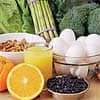 A report published in the October 22, 2007 issue of the journal
A report published in the October 22, 2007 issue of the journal 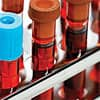 A trial reported in the November, 2007 issue of the journal
A trial reported in the November, 2007 issue of the journal 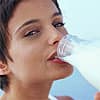 The current issue of the journal
The current issue of the journal 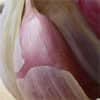 An article appearing online in the
An article appearing online in the 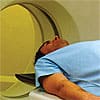 The "Annual Report to the Nation on the Status of Cancer, 1975-2004," published online on October 15, 2007 in the American Cancer Society's journal
The "Annual Report to the Nation on the Status of Cancer, 1975-2004," published online on October 15, 2007 in the American Cancer Society's journal